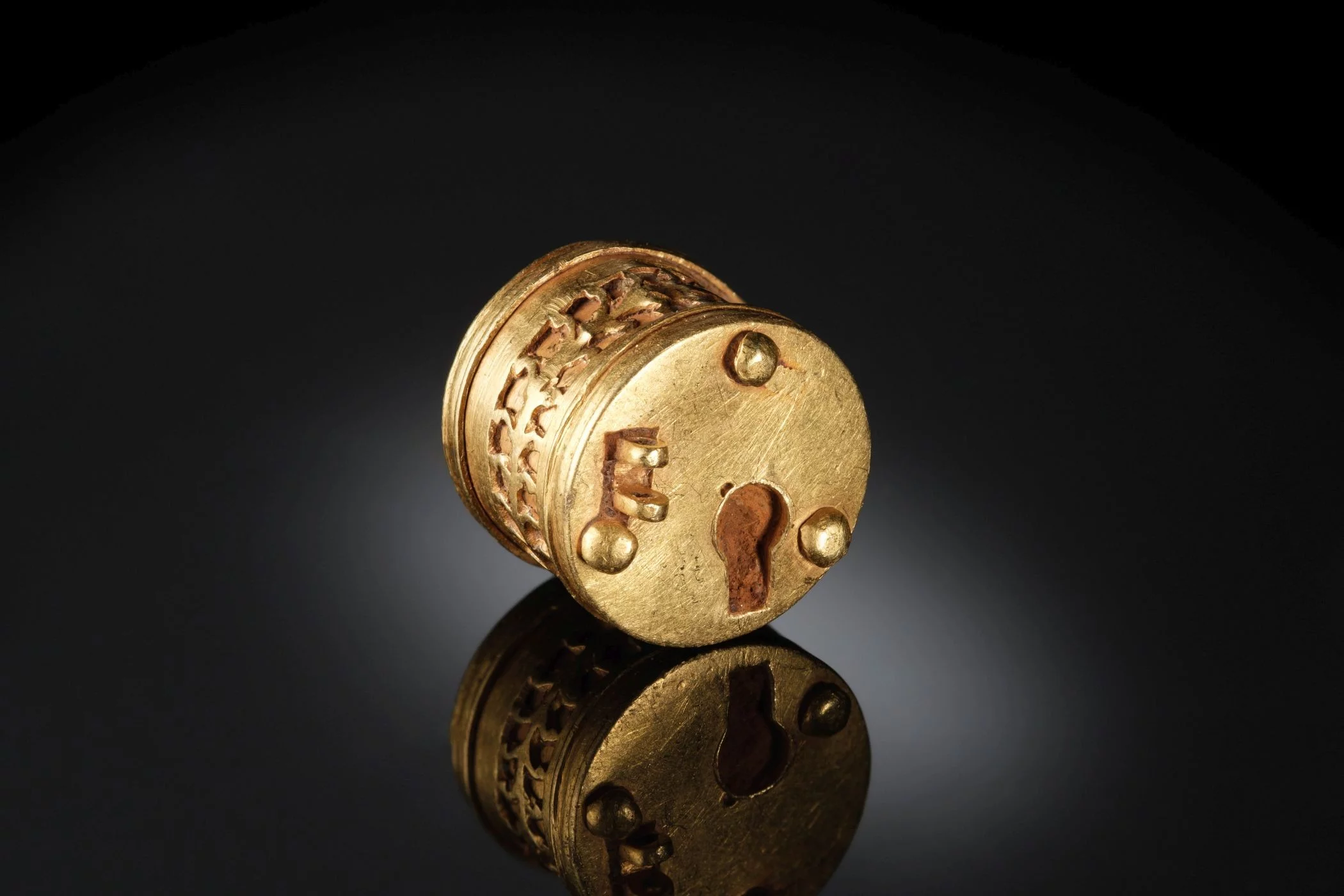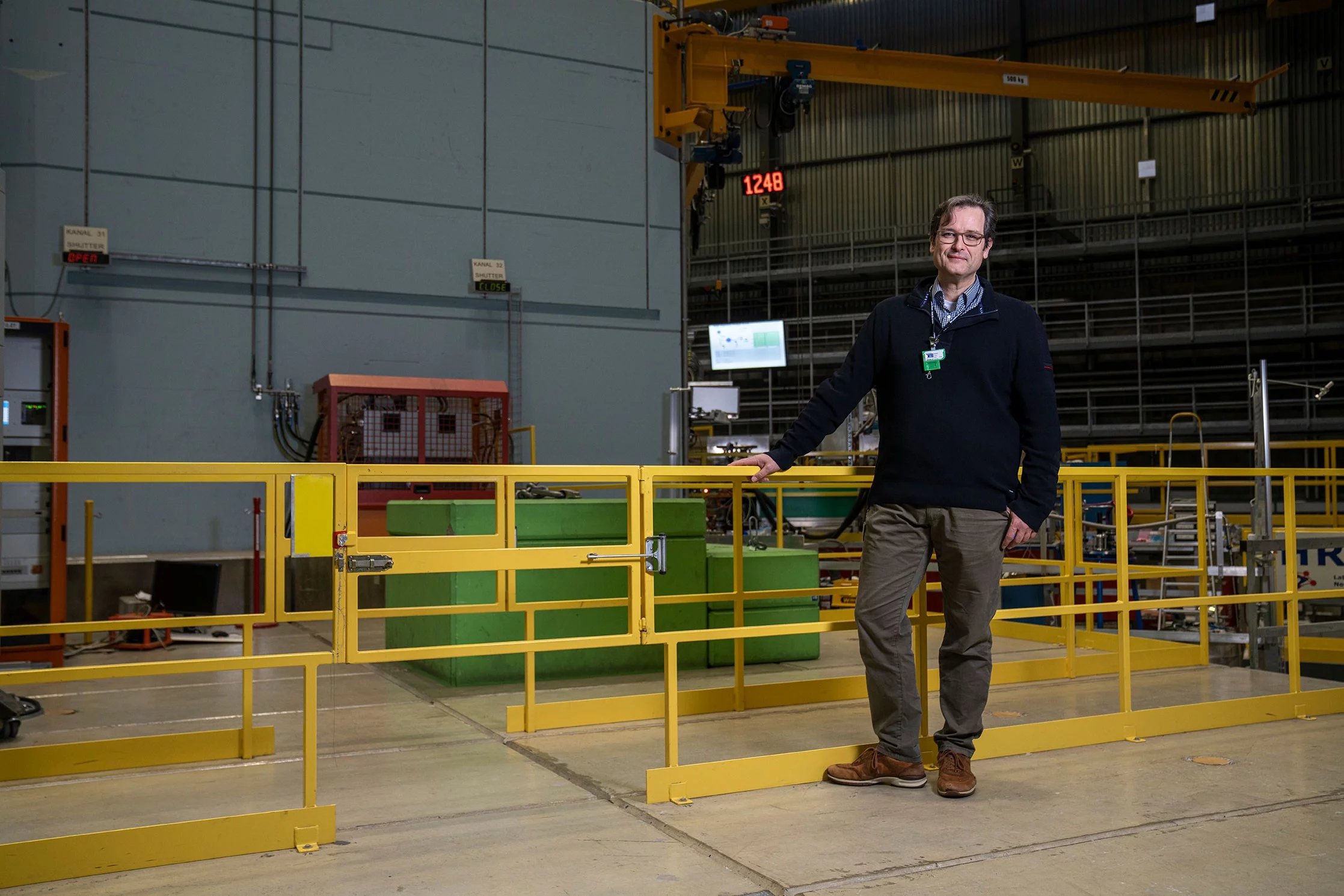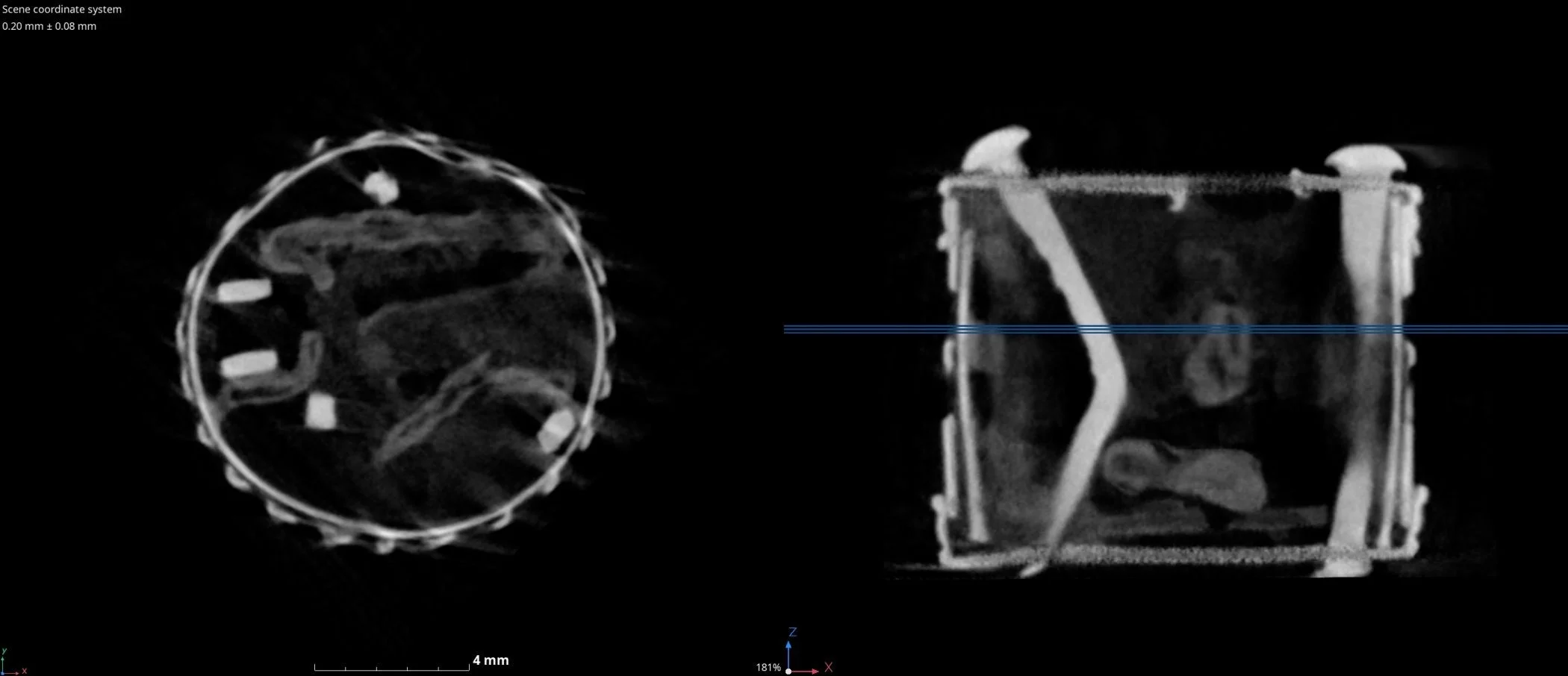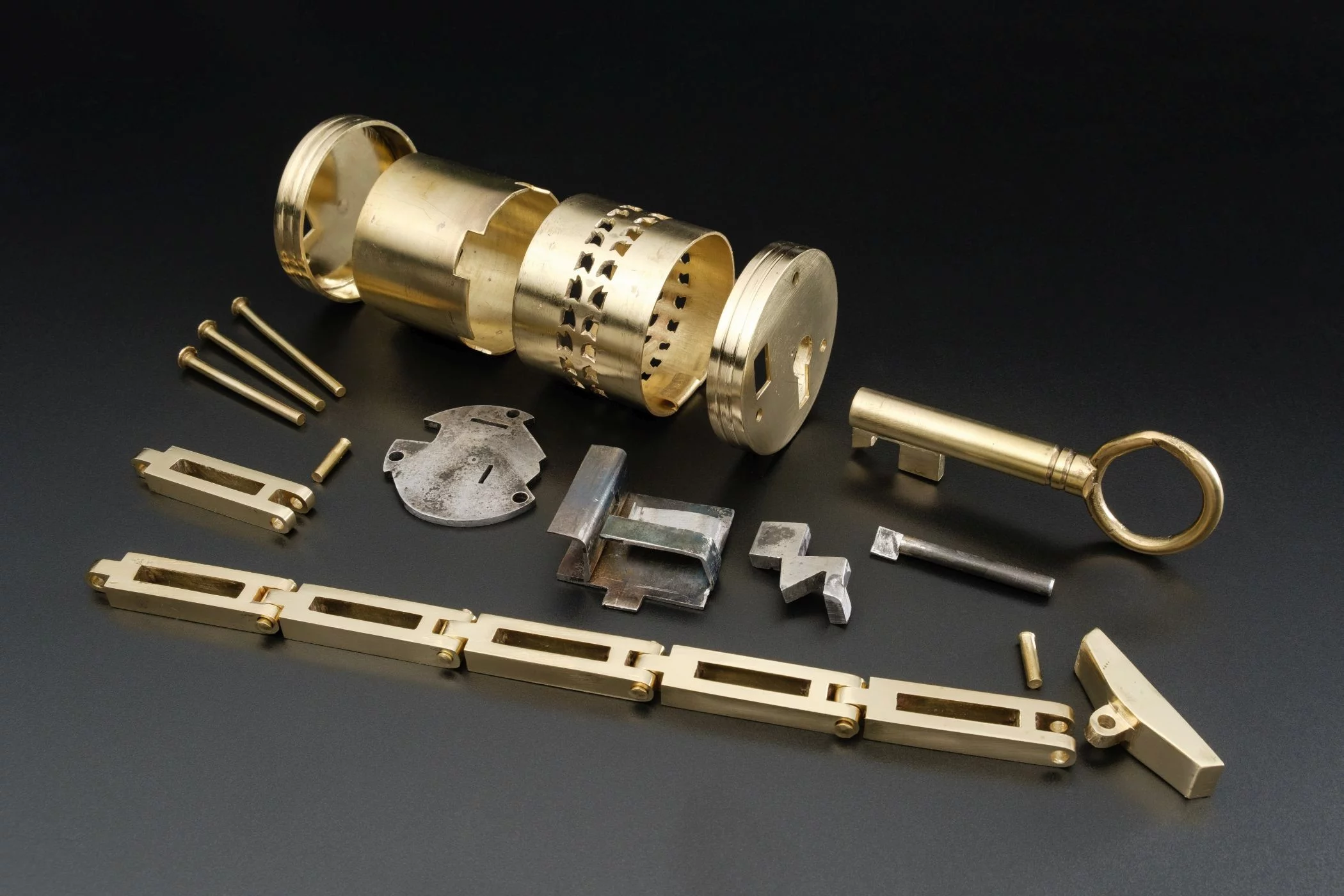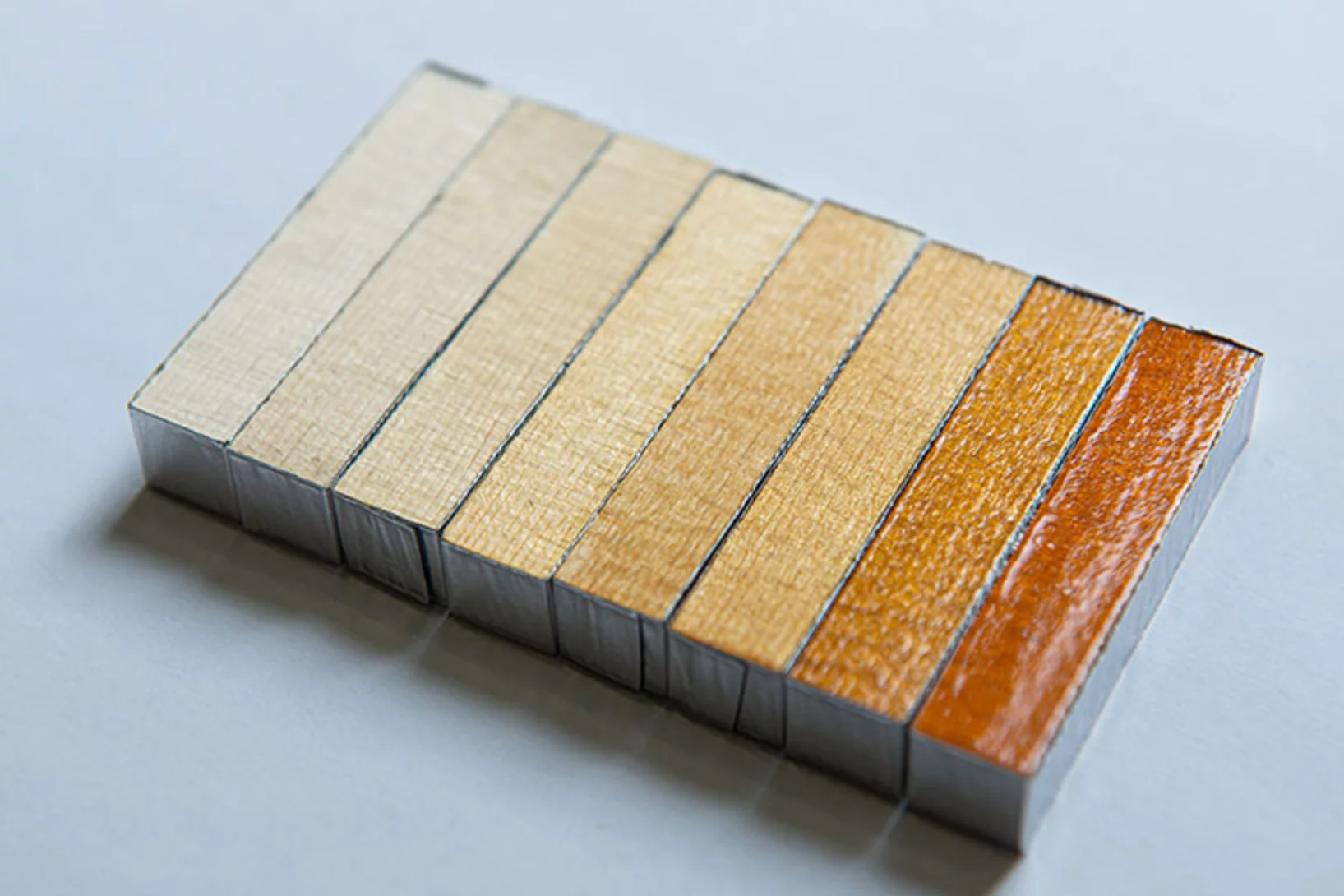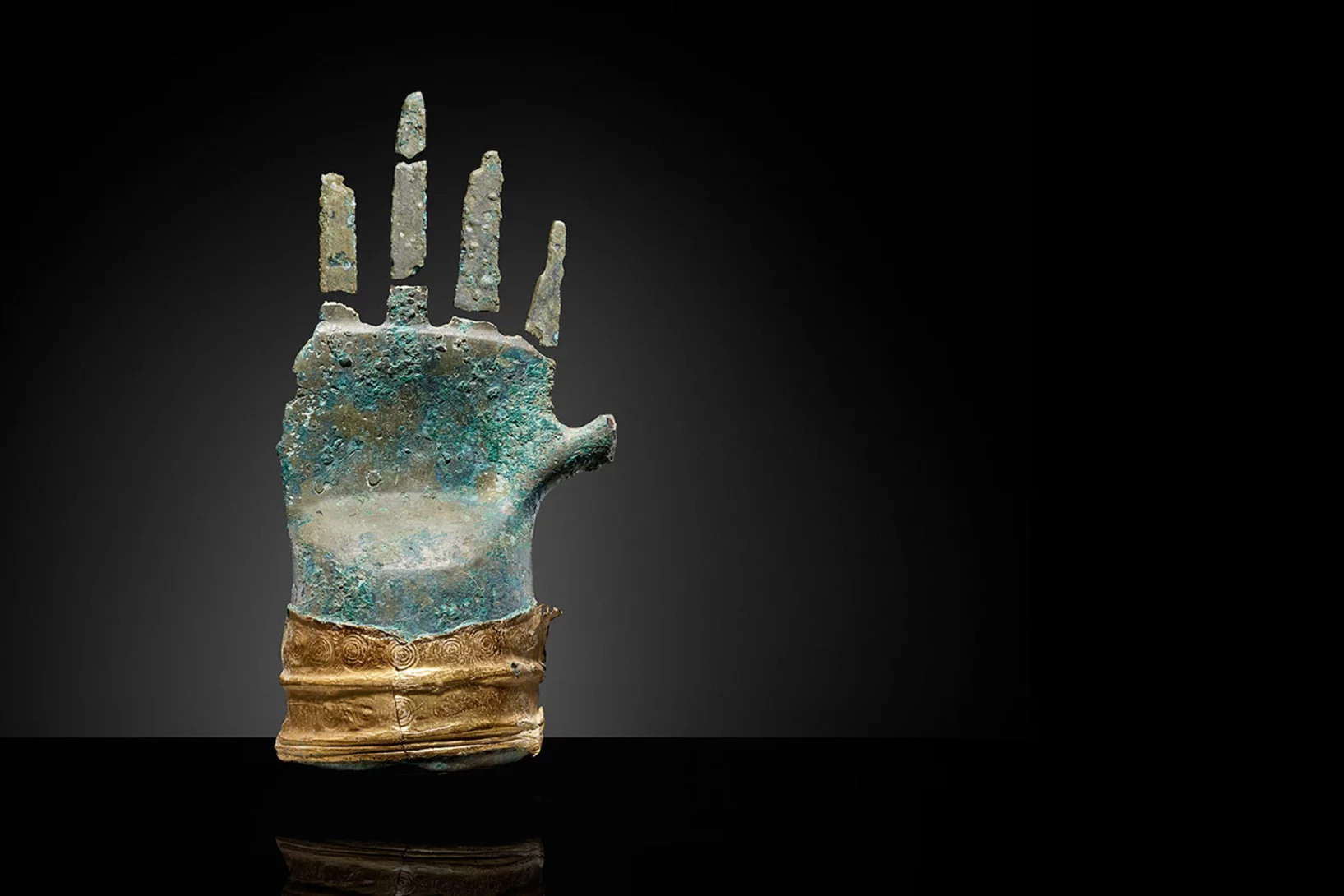David Mannes, researcher at the Paul Scherrer Institute PSI, has used neutrons to look inside an archaeological treasure – a miniature box lock from Roman times which was found in Germany.
It’s the kind of thing that makes archaeologists’ hearts skip a beat: a very small, beautifully decorated box lock made of gold, dating back to Roman times. A detectorist found it in a field in Westphalia in 2023 and took it to the experts at the regional association Landschaftsverband Westfalen-Lippe (LWL). The experts dated the object to the third or fourth century AD. They were also able to establish that it came from the Roman provinces and had travelled far north by unknown routes, all the way to Westphalia. The box lock may have been used to secure a jewellery box or something similar.
Difficult to see through
The filigree masterpiece from Roman times measured a mere 1.2 by 1.1 centimetres. But what was inside the tiny gold object? To the naked eye, all that was visible was a spot of rust – suggesting some mechanism made of iron. What that looked like and whether it was functional 1600 or 1700 years ago remained unclear. So the LWL experts resorted to X-ray tomography to examine the padlock. However, the resulting images only revealed those components made of gold: the casing of the box lock, an end link of the chain and the three rivets that held the assembly together. The inside appeared to be empty.
This is because gold has a much higher density than iron. X-ray imaging is based on the fact that as the radiation passes through an object it is attenuated to different degrees by materials of different densities. This creates a contrast – the light and dark shadows on an X-ray image. In the case of the Roman miniature box lock, however, the radiation was attenuated much more by the gold than by the iron components inside it – by a factor of about twenty. The gold acted like a protective layer, shielding the iron parts from the X-rays. So much so that none of the internal mechanism showed up in the images.
Neutrons instead of X-rays
In order to get at the secrets of the provincial Roman box lock, a different imaging technique was required – one that could handle the tricky mixture of metals, consisting of gold and iron: neutron tomography at PSI.
This is what led LWL archaeologist Ulrich Lehmann to contact David Mannes at the PSI Center for Neutron and Muon Sciences. The two scientists initially discussed the item and the technical problems over the phone. “After that, I realised that there was a good chance that this type of examination would be successful,” Mannes recalls.
A date was agreed, and in October 2023 Lehmann brought the box lock to PSI. It was transported in a small plastic container. The two men had a brief look at the Roman treasure and discussed how to proceed. Although Mannes was well aware that he was dealing with something very special, he focussed first on the technical issues: how well the object could be studied using his method.
Proton bombardment in the service of science
The instrument he prepared goes by the name of NEUTRA - NEUtron Transmission RAdiography. From the outside, it resembles a small concrete bunker, painted green; but inside, high-precision measurements are carried out. NEUTRA looks inside objects using neutrons – the neutral particles in the nucleus of atoms.
In order to use these neutrons in tomography, they must first be “freed” from the nucleus. This takes a powerful source: the Swiss Spallation Neutron Source SINQ. Protons are accelerated to almost the speed of light and then fired at a fixed target. The target contains lead. In the process, 15 to 30 neutrons are released per atomic nucleus – in technical terms, they are said to “evaporate”.
The released neutrons then strike the object under investigation, which is placed inside NEUTRA. A detector measures the amount of radiation passing through the object – the so-called transmission measurement. After each measurement, the object is rotated through a very small angle until a full 360 degrees have been recorded. The basic principle of neutron tomography is therefore much like that of X-ray tomography widely used in hospitals – except that it relies on a different type of radiation.
Taking the readings for the Roman box lock took a few hours. Afterwards, the box lock was placed in a safe to cool down. This is necessary because the items studied using neutron tomography become slightly radioactive for a short while. “Other than that, nothing happened to the box lock,” says Mannes. “This method of examination is non-destructive.”
Enough contrast for iron
Then the real work began: “Having recorded the readings, we start off with a large number of individual transmission images – taken from different angles. But you couldn’t really see much.” The images had to be reconstructed on the computer, by assembling them to form cross-sections. The software for this is a PSI in-house solution, developed by Anders Kaestner at the PSI Center for Neutron and Muon Sciences within the Applied Materials Group – the research group in which David Mannes works.
And once the reconstruction had been completed, the inside of the box lock was indeed revealed. Its iron and gold components appeared as darker and lighter structures respectively. Mannes explains why this is possible using neutrons. “Neutron beams penetrate gold much more easily than X-rays. The gold outer casing of the box lock attenuated the neutron beams significantly more than the iron inside. Even so, the neutrons were able to penetrate the gold while still providing enough contrast for the iron to show up.”
However, some of the details needed to decipher the mechanism were still missing. This required a second step, known as segmentation. “I tried to separate the different components as best I could – in the same way as archaeologists use a brush at an excavation site. In my case, though, I was separating image data using a virtual brush.” To do this, Mannes selectively sharpened the grey levels of the individual iron components, which allowed him to determine the contours of the iron mechanism.
Colourful internal views
The result was impressive. The cross-sections show the various individual parts highlighted in different colours: a frame with a spring and guide bar, a locking bolt, a broken guide for the bolt, a base plate and an inserted chain end link. The fact that the mechanism was damaged in one place could indicate that someone tried to pick the lock.
After Mannes had finished reconstructing and segmenting, he sent his findings to the LWL, where a restorer created a working 4:1 scale replica of the box lock. The gold Roman item was then unveiled to the public at the end of January 2025 – accompanied by articles in specialist journals and international press coverage.
Mannes will continue to follow the path of the now famous gold box lock from afar. He has already examined other archaeological artefacts with NEUTRA – a medieval sword from Lake Zug, for example, and a Buddha statue from western Tibet dating from the 14th or 15th century. “But the gold box lock is the only object so far where we were able to focus on such a delicate mechanism,” says the scientist. To this day, he is still impressed by how tiny the iron mechanism is. “This combination of age, size and material makes this small but remarkable Ancient Roman artefact something very special.”

